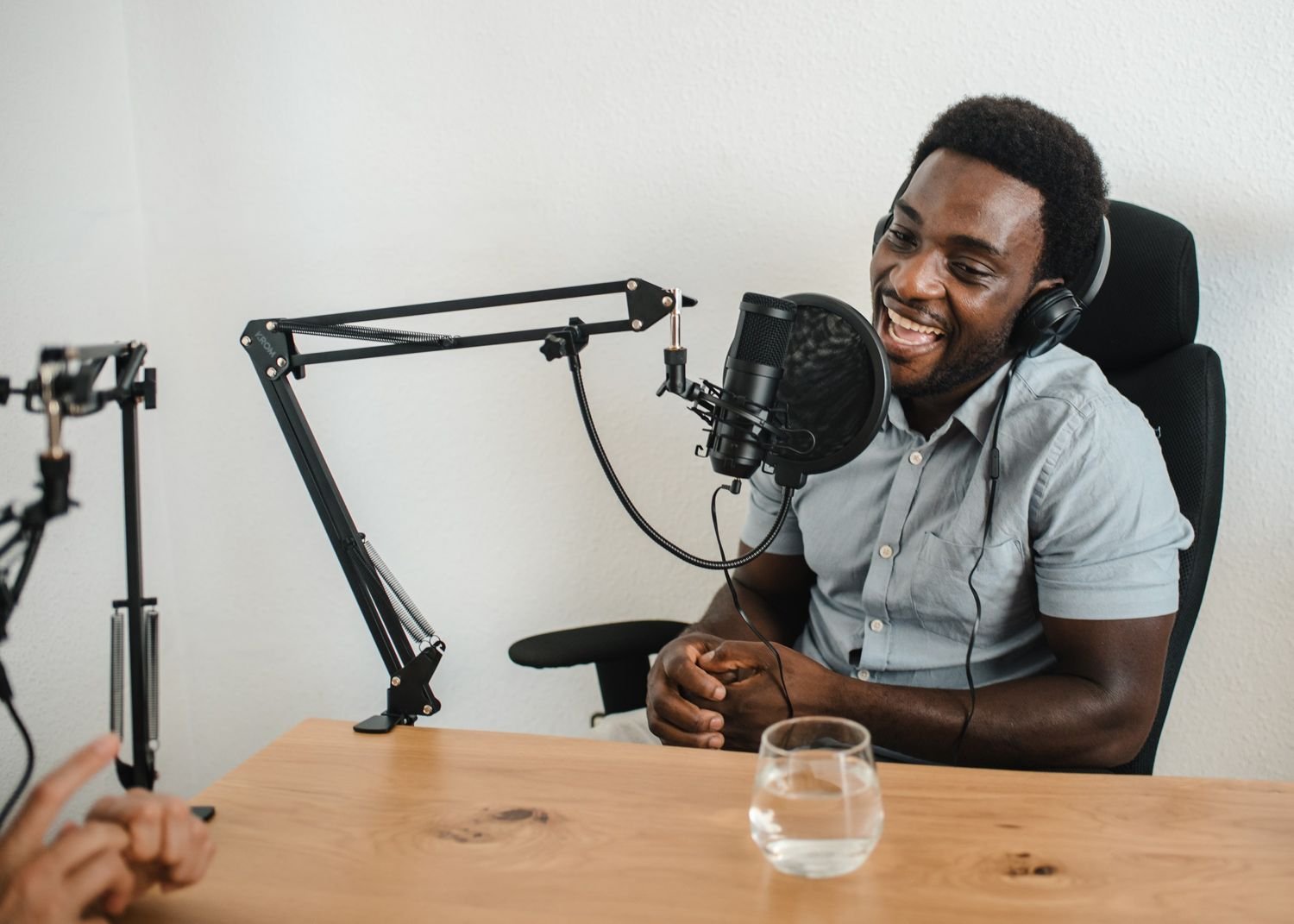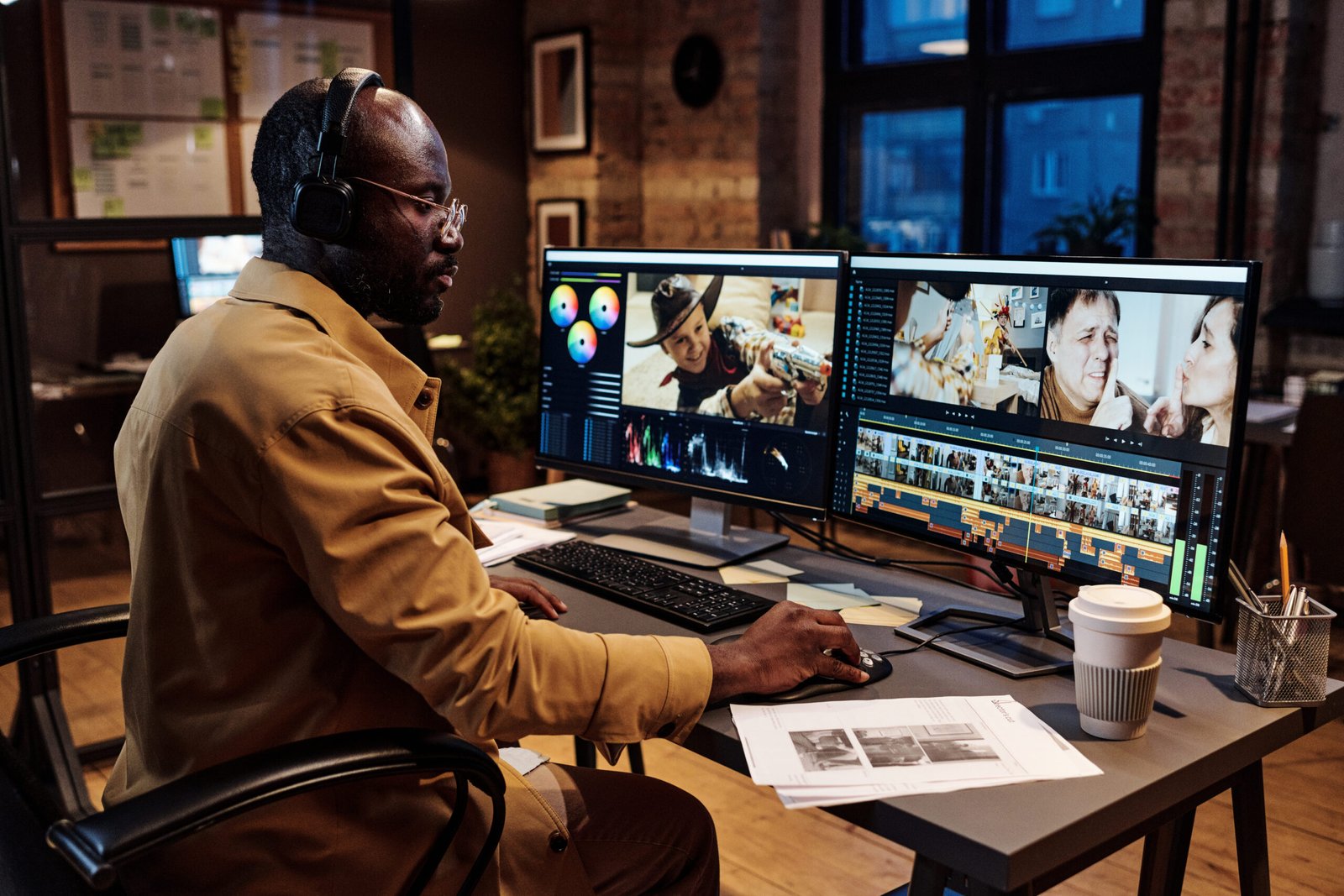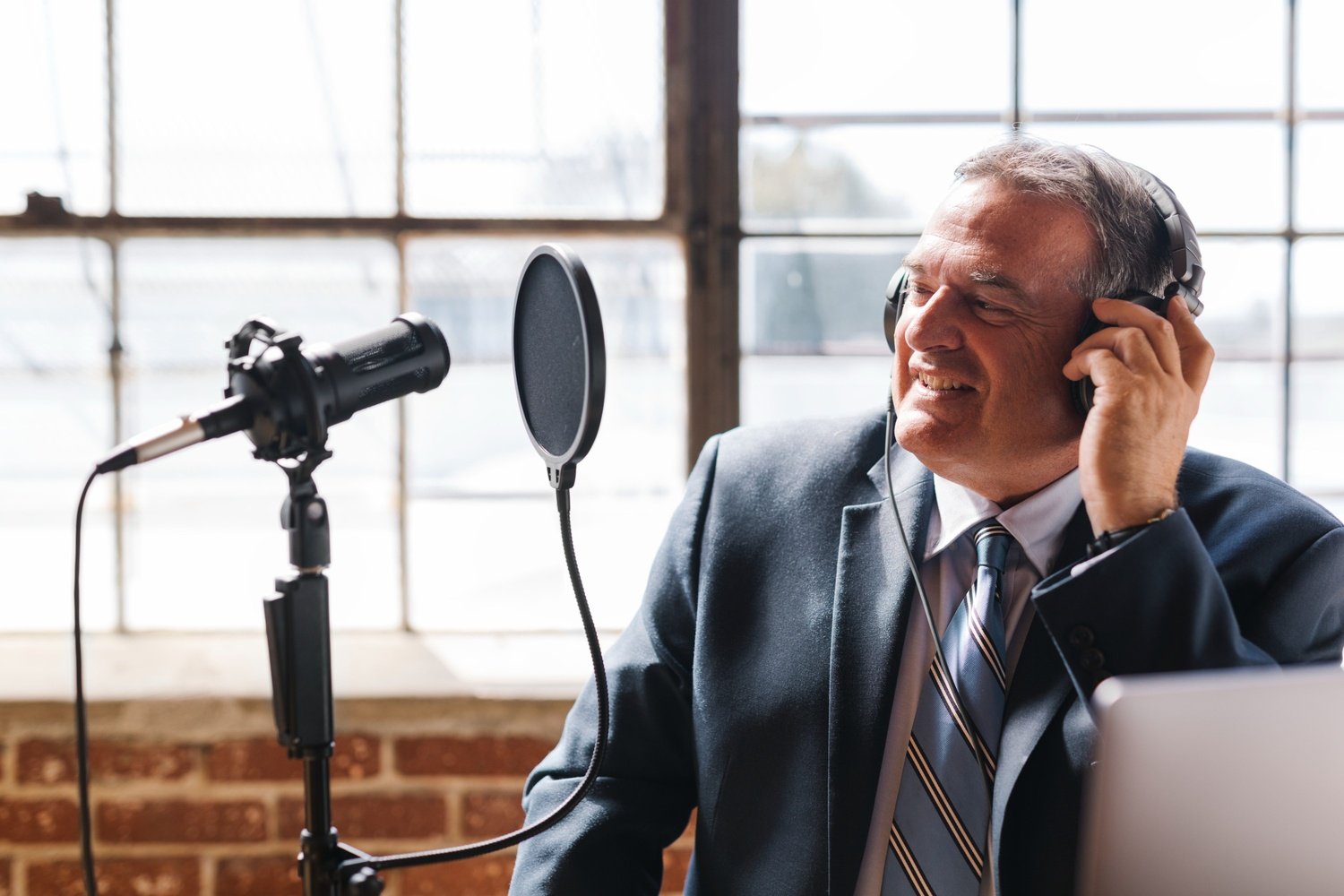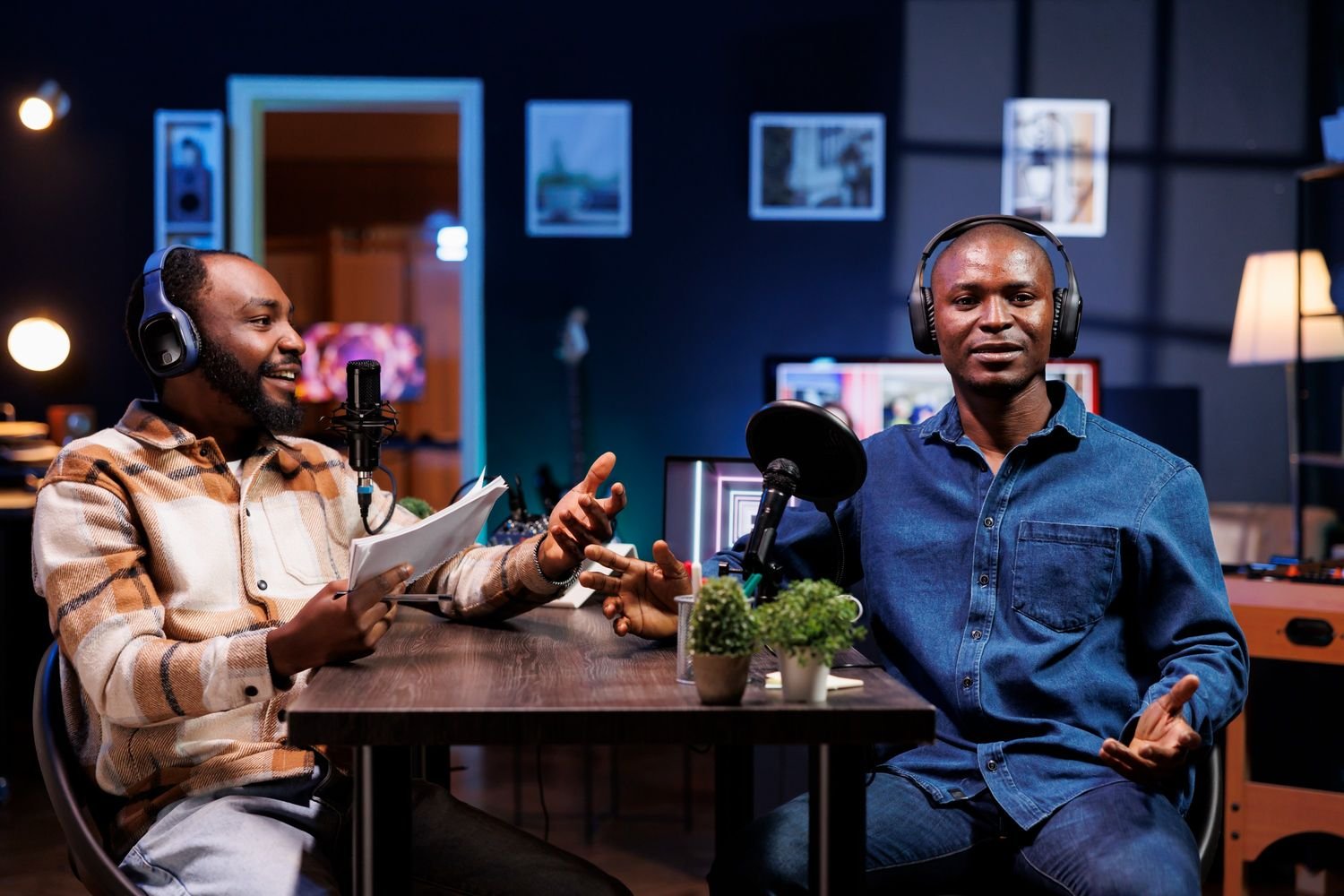Introduction:
In the ever-growing world of podcasting, standing out requires more than just great content. The quality of your audio plays a crucial role in how your podcast is perceived and whether listeners will stick around. Investing in quality equipment is not just about having the latest gadgets; it’s about ensuring your podcast delivers clear, professional-sounding audio that captivates your audience. This comprehensive guide will explore why quality equipment matters and provide practical advice on choosing the best gear to elevate your podcast.
The importance of quality equipment in podcasting
In podcasting, audio quality is king. Listeners today expect high-quality sound that’s easy on the ears. Poor audio quality can distract from your message, making it hard for listeners to focus on your content. Imagine tuning in to a podcast only to be greeted by muffled voices, background noise, or inconsistent audio levels. Chances are, you’d switch off pretty quickly. High-quality equipment helps you avoid these pitfalls, ensuring that your podcast sounds professional and polished.
Quality equipment enhances the overall listening experience by providing clear, crisp audio that’s free from distractions. This not only makes your content more enjoyable but also builds credibility and trust with your audience. Listeners are more likely to take your podcast seriously and return for future episodes if they know they can expect consistent, high-quality audio. Moreover, professional-sounding podcasts are more likely to attract sponsors, guests, and a larger audience, helping your podcast grow and succeed in a competitive market.
Understanding the Basics: Essential Podcast Equipment
Before diving into specific gear recommendations, it’s important to understand the basic equipment needed for podcasting. At a minimum, you’ll need a microphone, headphones, and an audio interface or mixer. Each of these components plays a critical role in ensuring your podcast sounds professional.
Microphone: The microphone is arguably the most important piece of podcasting equipment. It captures your voice and converts it into an audio signal. There are two main types of microphones used in podcasting: dynamic and condenser. Dynamic microphones are durable and excellent at rejecting background noise, making them ideal for less controlled environments. Condenser microphones, on the other hand, are more sensitive and provide a broader frequency range, offering richer sound quality. They are best used in a sound-treated space to minimize unwanted noise.
Headphones: Quality headphones are essential for monitoring your recordings. They allow you to hear exactly what’s being recorded and catch any issues in real-time, such as background noise or audio distortions. Closed-back headphones are ideal for podcasting because they prevent sound from leaking out and being picked up by the microphone, ensuring a cleaner recording.
Audio Interface or Mixer: An audio interface or mixer is necessary if you’re using XLR microphones, which are common in professional podcasting setups. These devices convert the analog signal from your microphone into a digital signal that your computer can process. They also allow for more control over your audio levels and quality. While audio interfaces are generally simpler and more compact, mixers offer additional features like multiple inputs and advanced sound control options.
Choosing the Right Microphone: Dynamic vs. Condenser
Selecting the right microphone is crucial for achieving high-quality audio. The choice between dynamic and condenser microphones depends on your recording environment and the type of sound you want to capture.
Dynamic Microphones: Dynamic microphones are known for their durability and ability to handle high sound pressure levels. They are less sensitive than condenser microphones, which makes them excellent at rejecting background noise and focusing on the sound directly in front of them. This makes them ideal for recording in less-than-ideal environments where background noise is a concern. Popular dynamic microphones for podcasting include the Shure SM7B and the Electro-Voice RE20, both of which are renowned for their clear, natural sound.
Condenser Microphones: Condenser microphones are more sensitive and provide a wider frequency response, capturing more detail in your voice. They require phantom power to operate, which is typically provided by an audio interface or mixer. Condenser microphones are ideal for controlled studio environments where background noise can be minimized. They excel at capturing the nuances of speech, making your voice sound richer and more vibrant. The Audio-Technica AT2020 and the Rode NT1 are excellent choices for podcasters looking for high-quality condenser microphones.
When choosing a microphone, consider your recording environment, budget, and the type of sound you want to achieve. Investing in a high-quality microphone that suits your needs will make a significant difference in the overall sound quality of your podcast.
The Role of Headphones: Monitoring and Editing
High-quality headphones are essential for both recording and editing your podcast. They allow you to monitor your audio in real-time and catch any issues before they become a problem. Using headphones with a flat frequency response ensures that you hear your audio accurately, without any artificial enhancements that can mask potential issues.
When choosing headphones for podcasting, opt for closed-back models to prevent sound leakage and minimize background noise. The Audio-Technica ATH-M50x and the Sony MDR-7506 are popular choices among podcasters for their comfort, durability, and excellent sound quality. These headphones provide accurate sound reproduction, allowing you to hear every detail of your recording and make precise edits during post-production.
Using high-quality headphones also helps in the editing process. You can accurately assess the quality of your audio, make necessary adjustments, and ensure that your podcast sounds professional and polished. Investing in good headphones is a small but significant step towards producing a high-quality podcast.
Enhancing audio quality: the importance of audio interfaces and mixers
An audio interface or mixer is a crucial component of a professional podcast setup, especially if you’re using XLR microphones. These devices serve as the bridge between your microphones and your computer, converting analog signals into digital ones and allowing you to control and enhance your audio quality.
Audio Interfaces: Audio interfaces are generally simpler and more user-friendly than mixers. They connect to your computer via USB or Thunderbolt and provide high-quality digital conversion. Popular models like the Focusrite Scarlett 2i2 and the PreSonus AudioBox USB 96 are favored for their reliability, ease of use, and excellent sound quality. These interfaces are perfect for podcasters who need a straightforward, high-quality solution for recording and monitoring audio.
Mixers: Mixers offer more advanced features and control over your audio. They allow you to adjust levels, apply effects, and mix multiple audio sources in real-time. This makes them ideal for podcasts that involve multiple hosts or guests, or for those who want more creative control over their sound. The Behringer Xenyx Q802USB and the Yamaha MG10XU are popular choices for podcasters looking for a versatile and powerful audio solution.
When choosing between an audio interface and a mixer, consider your specific needs and level of technical expertise. An audio interface is usually sufficient for solo podcasters or those with simple setups, while a mixer provides more flexibility and control for more complex recording environments.
Setting up your recording environment: optimizing for quality
The best equipment won’t make much difference if you’re recording in a noisy or echo-filled environment. Creating a suitable recording space is essential for achieving high-quality audio. Ideally, you should record in a quiet room with minimal background noise and good acoustics. Here are some tips for optimizing your recording environment:
Soundproofing: Minimize external noise by using heavy curtains, carpets, and soundproofing panels. These materials help absorb sound and reduce echoes, creating a cleaner recording environment.
Positioning: Place your microphone on a sturdy desk or mount to avoid vibrations and handling noise. Position it close to your mouth, but not too close, to avoid plosive sounds (like popping p’s and b’s).
Acoustic Treatment: Use foam panels or bass traps to treat the walls and corners of your recording space. This helps to absorb sound reflections and reduce reverberation, resulting in clearer and more focused audio.
By taking these steps to optimize your recording environment, you can significantly improve the quality of your podcast audio and ensure that your listeners have a pleasant and professional listening experience.
Maintenance and upgrades: keeping your equipment in top condition
Investing in quality equipment is just the beginning; maintaining it properly is crucial for ensuring its longevity and performance. Regular maintenance, such as cleaning microphones, checking cables, and updating software, can prevent technical issues and keep your equipment functioning at its best.
As your podcast grows, you may also want to consider upgrading your equipment to keep up with increasing demands. Investing in better microphones, audio interfaces, or even studio monitors can enhance your production quality and provide more flexibility in your recording and editing process. Staying up-to-date with the latest advancements in podcasting technology can help you maintain a competitive edge and continue to deliver top-notch content to your audience.
Maecenas iaculis pharetra nunc sit amet malesuada. Nulla facilisi. Fusce molestie at libero at ultricies. Suspendisse iaculis orci quam, at iaculis nisl dapibus eget. Quisque quis aliquet nisl, maximus viverra ligula. Sed erat elit, luctus id pulvinar quis, consectetur vitae ex
Darrel Wilson
Conclusion: the value of investing in quality equipment
Investing in quality podcasting equipment is a wise decision that pays off in the form of clear, professional-sounding audio that attracts and retains listeners. By understanding the importance of each component, from microphones and headphones to audio interfaces and mixers, you can make informed choices that elevate your podcast and enhance the overall listening experience.
Quality equipment not only improves the technical aspects of your podcast but also contributes to your credibility and success as a podcaster. It shows your audience that you are committed to delivering high-quality content and that you value their listening experience. So, take the time to research and invest in the right gear, and watch your podcast reach new heights of professionalism and popularity.






